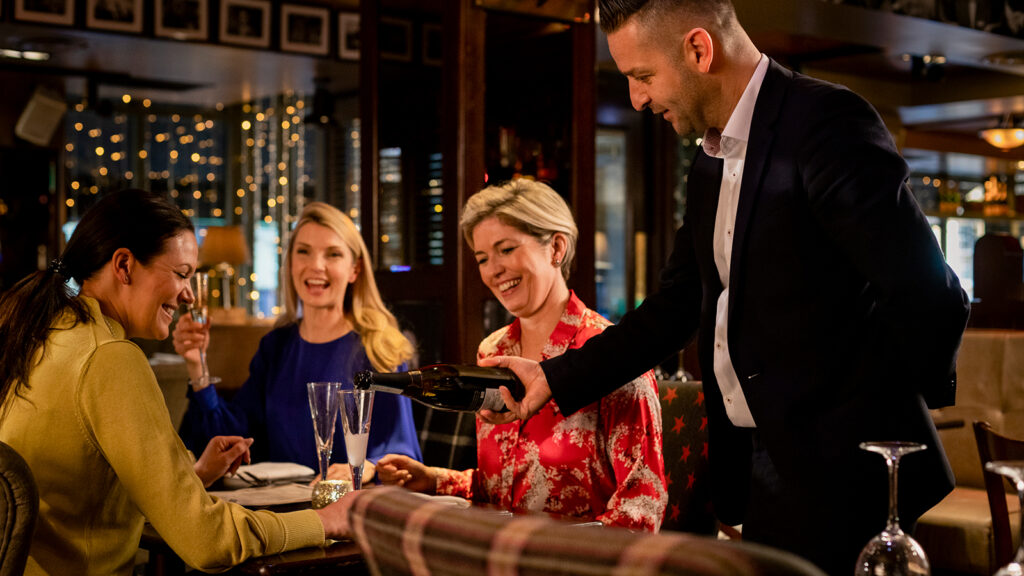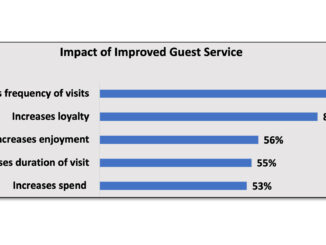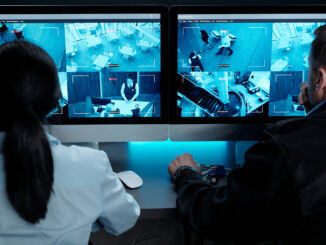Food and Beverage is one of those unappreciated services in a casino property, but so extremely necessary. Food and Beverage is considered “fuel” for the player and expected to be good, quick and affordable, but it is also one of those important anchors keeping a player from leaving his game or leaving the property to be fulfilled. These lead to significant challenges and differences from traditional restaurant offerings.
For every category, we’ve broken down with Good, Better and Best and the Casino Difference compared to traditional F&B operations.
1. Diverse Menu Offerings
Good: Have several venues open and available to give people a choice of foods.
Better: There are many differences in offerings from food options, to price, access and quality.
Best: Offer a wide range of dining options, from casual eateries to fine dining, and include various cuisines to cater to diverse tastes. Provide menu items that cater to different dietary restrictions and preferences, including vegan, gluten-free, and allergy-friendly options. Incorporate seasonal ingredients and local produce to ensure freshness and support local businesses.
Casino Difference: In a casino property, not only should you offer the best option in menu offerings, you also should understand the players desires. Do your top-tier players get to assist with new menu creations, special tastings and thank you dinners that are off-menu?
2. High-Quality Ingredients
Good: Menus are created using certified providers and distributors.
Better: Several distributors are used to ensure quality products are delivered and allow for a more varied menu offering.
Best: Source the freshest ingredients possible, prioritizing organic and locally sourced items when available. Opt for sustainably sourced seafood, meats, and produce to promote environmental responsibility. Stock premium and high-quality brands for beverages and specialty items to enhance the dining experience.
Casino Difference: The culinary team need to be able to “cater” to all types of wants and often time finding specific ingredients from one vendor or another is difficult. Menu changes can also be difficult for players who are “comfortable” with one menu item or another, leaving less room for the chef to be creative in menu offerings. Balancing menu costs with pricing that is “player friendly” makes this a challenge as well (see note on dynamic player pricing).
3. Exceptional Service
Good: Uses the guest’s name and always has a smile on their face.
Better: Listens and customizes the guest’s requests and concerns for a personalized response.
Best: Anticipates the guest’s needs and guides them through the process of exceeding their expectations no matter what is needed for a very personalized experience. Invest in regular training for staff on customer service, food safety, and product knowledge to ensure professional and knowledgeable service. Encourage staff to engage with guests, offering recommendations and creating a welcoming atmosphere. Focus on the details, such as timely service, cleanliness of dining areas, and proper presentation of food and beverages.
Casino Difference: Knowing your players by name and recognizing their unique differences and requests. Player tiers have different access and incentives, but everyone should be treated with exceptional service regardless of being top-tiered or entry level player.
4. Innovative Menu Design
Good: Menus are rotated periodically.
Better: Specials are introduced to validate future inclusion monthly.
Best: Through proper menu analysis, menus are adjusted quarterly. Regularly update the menu with innovative and exciting dishes to keep the dining experience fresh and engaging. Develop unique, signature dishes or drinks that set your casino’s F&B offerings apart from competitors. Host themed dining events or special promotions that align with holidays, seasons, or casino events.
Casino Difference: Hosted themed events are designed to either bring in players for a gaming experience or thank them for their loyalty. Signature drinks and menu items are often designed around player preferences and may not follow the latest trend.
5. Efficient Operations
Good: Schedules are set, and the team shows up reliably.
Better: Team members work with systems that make their work more streamlined.
Best: Systems are holistic to the property begin efficient and are used to measure success and opportunities. Implement robust inventory management systems to minimize waste, control costs, and ensure ingredient availability. Use advanced point-of-sale (POS) systems to streamline orders, track sales, and manage customer preferences. Design an efficient kitchen layout and workflow to optimize food preparation and reduce wait times.
Casino difference: Interfaces are used to work ‘with’ gaming systems so that player utilization and point capture can be used. Management teams work together to ensure that systems optimize performance of the team through studying analytical data. The player is ultimately the priority.
6. Cleanliness and Safety
Good: The bathrooms are clean and fully stocked and there isn’t trash on the floors. Security is visible.
Better: Sanitation stations and documentation is displayed to notify that it is a priority at this casino. Security officers are throughout the casino and are interacting with team members and guests alike.
Best: Rigorous hygiene standards are maintained through cleanliness protocols and procedures throughout the casino, especially in high-touch areas like gaming floor, slot machines, restaurants & bars, and restrooms. Maintain strict hygiene and sanitation protocols in all food preparation and dining areas. Regularly conduct health inspections and audits to ensure compliance with local and national food safety regulations. Enforce health and safety guidelines for employees, including regular health checks and proper attire.
7. Beverage Excellence
Good: Correctly portioned drinks and recipes are followed and served at the proper temperature.
Better: Drinks are served quickly, taste great and served with a smile.
Best: Offer a curated selection of wines, beers, spirits, and cocktails, including local and international options. Employ skilled bartenders and mixologists who can craft high-quality, innovative cocktails. Provide food and beverage pairing suggestions to enhance the dining experience.
Casino difference: Technology can be used to track where a player is on the gaming floor to ensure that the drink they ordered arrives within 15 minutes of ordering, even if they move to another game. Comp drinks (where available) should be of quality selection and appropriate to the location – High limit and private areas should offer premium options or personalized selections.
8. Customer Feedback
Good: Send out paper comment cards and respond to all of them.
Better: Talk to our guests and implement many of their recommendations.
Best: Implement systems to gather and analyze customer feedback, such as electronic comment cards, online reviews, and surveys. Use feedback to make continuous improvements to the menu, service, and overall dining experience. Engage with customers on social media and other platforms to address feedback and promote new offerings.
Casino difference: Hosts or Player Services will often engage with players to understand their concerns or hear compliments and make suggestions. Great casino interfaces and push content, delineated by player levels are used to get instant feedback and personalized responses to high-tier players.
9. Marketing and Promotions
Good: Send out postcards to existing data-base with upcoming events and promotions.
Better: Implement a strategic marketing plan to bring players into the property with restaurant offerings and other non-gaming events.
Best: Integrate F&B offerings with casino loyalty programs to reward frequent diners and encourage repeat visits. Collaborate with other casino amenities for cross-promotional deals, such as dinner and show packages. Utilize digital marketing strategies, including social media, email newsletters, and mobile apps, to promote special events, new menu items, and exclusive offers.
Casino difference: Design specific marketing and promotions for each tier of player.
10. Ambiance and Design
Good: Comfortable feel.
Better: Updated design and modern feel, creating a relaxing environment.
Best: Create a welcoming and enjoyable atmosphere in all dining areas, with attention to lighting, music, and decor. Ensure comfortable seating arrangements and maintain a clean, appealing dining environment. Incorporate the overall theme and brand of the casino into the F&B areas to provide a cohesive guest experience.
Casino difference: Balancing a cultural or tribal art with the interior design where appropriate to incorporate community and tradition increases the perceived ambiance.
Conclusion
Implementing these best practices in the casino food & beverage realm can significantly enhance guest satisfaction, drive repeat business, and elevate the overall reputation of the casino’s dining offerings.
When is the last time you audited your food and beverage operation? Whether you’re ready to expand your gaming property to include a hotel or you’re adding more F&B or retail outlets, Raving’s hospitality team will help you create consistent and measurable training standards, policies and procedures, protocols and goals, property-wide. Let’s start the conversation!





